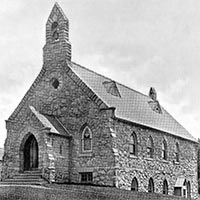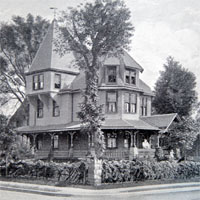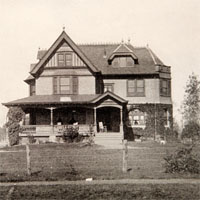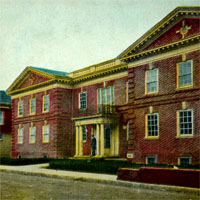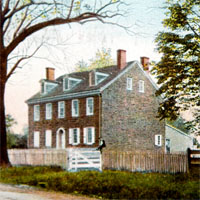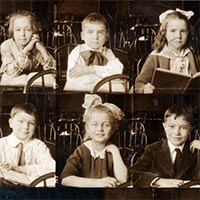A blacksmith shop stood at this location across from the General Wayne Inn since the 18th century; it was said to have shod General Cornwallis's horse during the Revolution.
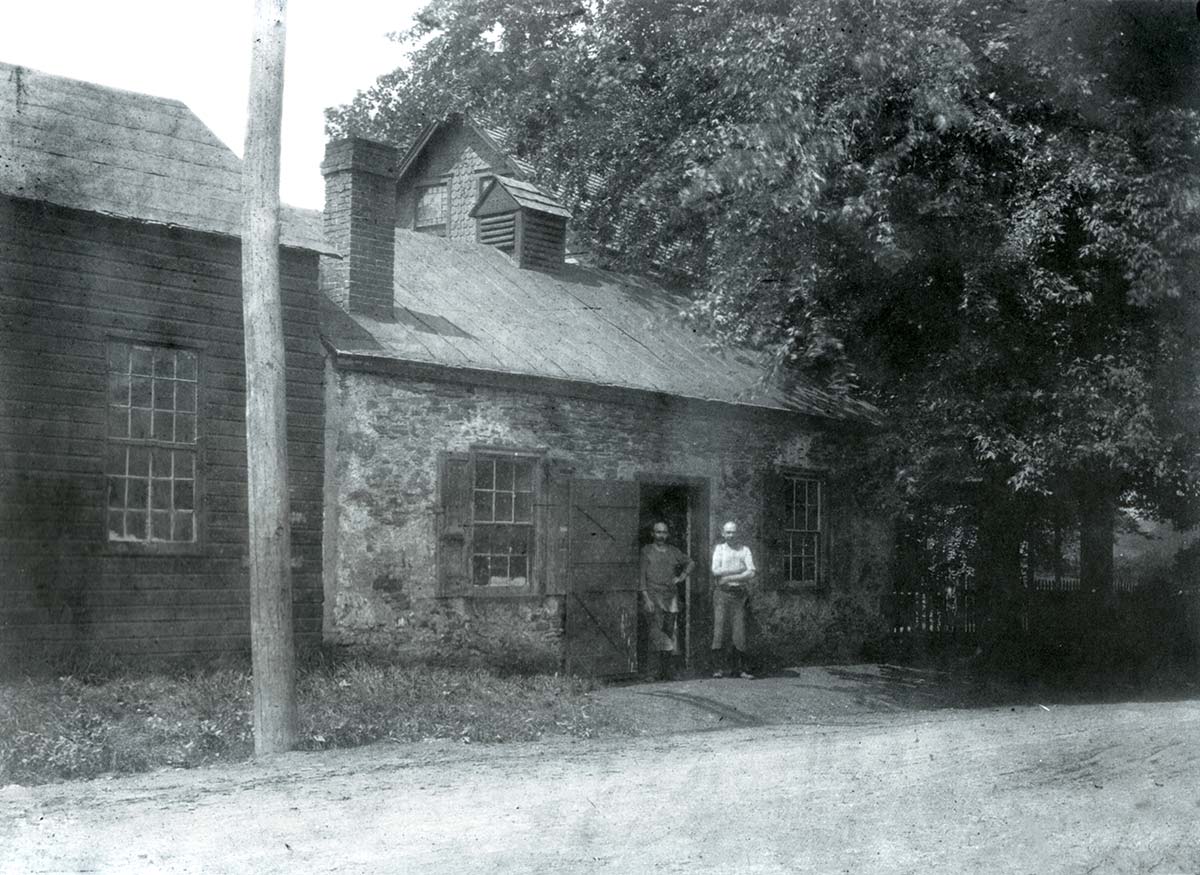
Narberth’s last blacksmith

Thomas Fleming, the last blacksmith to work its forge, emigrated from County Sligo, Ireland in 1888. Eight-year-old Mary Brennan, also from Sligo, had preceded him in 1880. They found each other, married in Bryn Mawr in 1894 and moved to Merionville[1]. Thomas worked as a Horse Shoer, almost certainly in the Parsons Blacksmith Shop, which stood at Parsons Ave. and Ford Rd. He was successful enough by 1903 to acquire the Narberth smithy property, which included a twin dwelling, today's 610 Montgomery Ave. For the next 16 years, the Flemings lived in its left half and rented out the right. But times were changing. Narberth in 1900 had 857 inhabitants and six blacksmiths. By 1920, the numbers were 3,704 and one, Thomas.
…replaced by first gas station

After Thomas died in 1924, Mary petitioned the borough to allow the property to be sold for use as a gas station, despite its residential zoning. Her lawyer successfully argued that this constituted a permitted continuation of its previous use, that a gas station was the same kind of business, indeed a "logical successor", to a blacksmith shop.[2] So in 1930 Mary sold the property to Standard Oil of Pennsylvania (Esso) and a gas station, the first in Narberth, soon replaced the 200-year-old smithy.[3] As the first post-colonial commercial structure on Narberth's Montgomery Avenue, it foreshadowed the strip's commercial future, as well.

Transcription
Tearing Down Old Blacksmith Shop Dating from Revolutionary Days
The power shovel is shown at its biting work of demolishing the old landmark at Montgomery and Haverford avs., near Narberth. The ancient shop, the stone walls of which were two feet thick, is making way for an automobile gas station.
The Bellows used by the "smithy," who is said to have shod the chargers of General Howe and Lord Cornwallis during the British occupation of Philadelphia, are in a fair state of preservation. Standing beside the bellows are Charles H. Pararja, who is superintending the building, and Warren Austin, an electrician.
References
- Deed book 507, page 361
- Merionville was located at the junction of Montgomery, Levering Mill and Old Lancaster Roads in Merion.
- "Many Air Views at Zone Meeting", Our Town, July 23, 1927
- "John Odell, owner of the General Wayne, wanted to save it from the wreckers when they cleared the site for the present gas station. However, the cost of moving the historic structure across Montgomery Ave was estimated at $3,500, and Odell had no place to put it, anyhow." — Main Line Chronicle, Narberth 75th Anniversary supplement, 1970 (PDF), p. 18.
Updated September 24, 2023.











